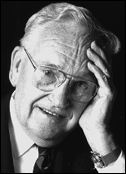The Chinese Tallow Tree - Growing Oil on Trees

Stanley I. Mason, Jr. (1921 - 2005) |
The Chinese Tallow Tree (Sapium sebiferum) is an ancient and valuable oil seed producing tree with a long history of large scale commercial production in China and other parts of Asia. Remarkably hardy and adaptable, it has also been introduced in many other subtropical regions of the world. It is one of nature's most prolific producers of renewable hydrocarbons, yielding the equivalent of 500 gallons (12 barrels) of fats and oils per acre per year (4,700 liters per hectare) - far exceeding other traditional oil seed crops. Chinese Tallow Tree oil was used successfully as an emergency source of fuel for diesel equipment operated by Chinese and Allied forces during the Second World War, and its application as a renewable diesel and jet engine fuel has been further investigated more recently in Germany and the United States.
The Chinese Tallow Tree has long been recognized by U.S. scientists (beginning with Benjamin Franklin in 1772) for its beneficial economic potential, and the tree has been successfully introduced in southern and coastal regions. Serious efforts by the USDA in the early part of the 20th Century demonstrated the adaptability and large oil yield of the tree in the U.S. However, traditional Chinese hand harvesting methods were not economical, and the mechanical harvesting technology of that era was not capable of efficient recovery of the large potential oil resource.
In 1978, Simco, Inc. recognized the opportunity for a modern, commercial crop development program with the Chinese Tallow Tree. Simco's work has covered all aspects necessary to establish a new industry, including: genetics and crop improvement, cultivation and tree management, harvesting technology, seed processing, product manufacturing, and market identification. This effort has received international attention and significant direct and in-kind support from the National Science Foundation through SBIR grants, USDA, Department of Energy (Energy-Related Inventions Program), the State of Hawaii, numerous academic research institutions, multinational interests such as Unilever, Anderson Clayton, Deutz Diesel, Johnson's Wax, and agricultural plantations in Hawaii. This Simco directed effort led the USDA Office of Critical Materials in 1986 to designate the Chinese Tallow Tree as one of fourteen promising new crop species for American farmers to grow new hydrocarbon stocks and industrial materials.
From the beginning, the work has focused on the challenge of mechanical crop harvesting. Based on studies of the growing habit of the tree and analysis of modern harvesting technologies, a patent for the cultural growth, management, and cropping of trees in a hedgerow configuration was granted to Stanley I. Mason in 1982. Simco's Chinese Tallow Tree commercialization program is currently at the stage of building and operating a prototype of the harvester in the Hawaiian Islands.
Simco has focused its current efforts in Hawaii where it anticipated the decline of the sugarcane and pineapple industries. The State and island governments, the scientific community, and plantation owners are all working to reduce the State's energy dependence on imported petroleum (the highest in the nation at over 90%), while maintaining plantation agriculture, diversifying the manufacturing economy, and contributing to global environmental stability through tree planting.
Additional Reading
- "Stanley Mason: Ordinary, Everyday Products," Inventor of the Week Archive, May, 1998, http://web.mit.edu/invent/iow/mason.html, accessed 05/23/2014.
- Stephen Miller, "Stanley Mason, 84, Prolific Inventor," The New York Sun, January 19, 2006, http:/www.nysun.com/obituaries/stanley-mason-84-prolific-inventor/26170/, accessed 05/22/2014.
Exerpted from: "Earthtrends: A Look into the Future of Inventing," America's Inventor, online edition, December, 97 Issue, http://www.inventionconvention.com/americasinventor/dec97issue/section12.html, accessed 04/28/2014. Reprinted in accordance with the "fair use" provision of Title 17 U.S.C.
|
|
|